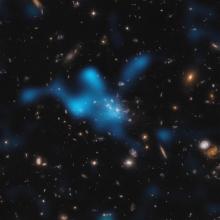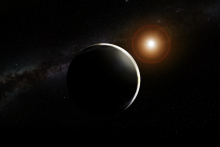Listen to today's episode of StarDate on the web the same day it airs in high-quality streaming audio without any extra ads or announcements. Choose a $8 one-month pass, or listen every day for a year for just $30.
You are here
Post-War Astronomy II
During World War II, British physicist James Stanley Hey discovered that the Sun produces radio waves. He was studying radar technology for the military at the time, though, so he couldn’t reveal the discovery until after the war.
The war ended 75 years ago today, when Japan signed a formal declaration of surrender. Hey’s discovery was declassified soon after. And within a couple of years, scientists around the world were using war-surplus radar equipment to study the universe in great detail.
Many areas of science and technology benefitted from the advances made during the war, from nuclear physics to computers. But perhaps none benefitted as much as radio astronomy. Before the war, there was only one full-time radio astronomer in the world. By a decade after the war, there were dozens, along with big radio observatories.
Radar was developed to locate and track enemy aircraft well before they could reach their target. It sent out beams of radio waves, then tracked the “echo” when those waves reflected off the aircraft.
Scientists who had worked on radar systems during the war snatched up leftover receivers and converted them into telescopes. Experience with this early equipment led to better telescopes. Eventually, that allowed astronomers to study the hearts of galaxies, map the shape of the Milky Way, and discover quasars and pulsars. We’ll talk about a modern pulsar discovery made with radio telescopes tomorrow.





